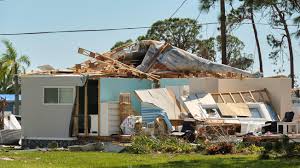Relocating a mobile (or portable) home might be difficult. However, there are situations where homeowners can benefit from free removal services. So, if you own one, you must know what steps are involved in the free mobile home removal process!
Knowing the procedures for removing your portable home can make the process go more smoothly, regardless of whether it is outdated, broken, or unnecessary.
Determine If You Qualify for Free Removal
Free removal is not available for every portable residence. Finding out if your house satisfies the requirements given by removal service providers is the first step. Among the variables influencing eligibility are:
- The state of the mobile home (removable and in need of minimal repairs)
- Location and accessibility
- The local demand for pre-owned mobile homes
- Adherence to regional environmental and zoning laws
If the mobile home is in good shape and can be recycled for materials, resold, or renovated, some businesses will remove it for free.
Contact a Mobile Home Removal Service
The next step is to contact recycling businesses, salvage yards, or mobile home removal firms if eligibility has been established. Give them important information like:
- The mobile home’s dimensions and design
- Present state of the home (damages, missing pieces)
- Accessibility and location (whether on private property or in a park)
- Proof of ownership and required paperwork
Having this information on hand speeds up the procedure and enables the service provider to determine whether free removal is possible.
Contact Texas Mobile Home Removal now!
Obtain the Required Licenses and Permits
Verify local regulations and secure any necessary permits before removal starts. This might consist of:
Demolition or Transport Permits
Local governments require demolition or transport permissions to remove buildings.
Utilities Disconnections
Water, sewage, and electricity must all be correctly disconnected.
Landowner Permission
Permission from the landowner may be necessary if the mobile home is on rented property.
To ensure legal compliance, removal firms assist homeowners with this process.
Disconnect Utilities and Prepare for Removal
All utilities linked to the mobile home must be securely disconnected before removal. This comprises:
- Electrical wiring and a power supply
- Sewer and water lines
- Gas lines (if any)
Homeowners should also remove all personal items and disconnect any attached structures, such as decks, porches, or skirting.
Move or Deconstruct the Mobile Home
Depending on its condition, the mobile home will either be transported as a whole or disassembled for salvage. The two primary removal techniques are:
Relocation
If it is in excellent shape, the mobile home can be moved to a different area for donation or sale.
Demolition and Salvage
If the mobile home cannot be repaired, it will be taken apart, and any materials that may be recycled or sold will be kept.
Site Cleanup and Restoration
Cleaning up the place is the last step after removal. This might include:
- Eliminating hazardous materials and waste
- Repairing any flaws in the foundation
- Preparing the land for use in the future
Site cleanup is a free service offered by certain moving firms but may be an additional fee for others.
The Bottom Line
Knowing what steps are involved in the free mobile home removal process requires you to determine the eligibility of your portable residence. By following these steps, homeowners may save money and guarantee a seamless, legally compliant removal procedure. Look for local services if you are thinking about getting your mobile home removed to determine which one is ideal for you.


